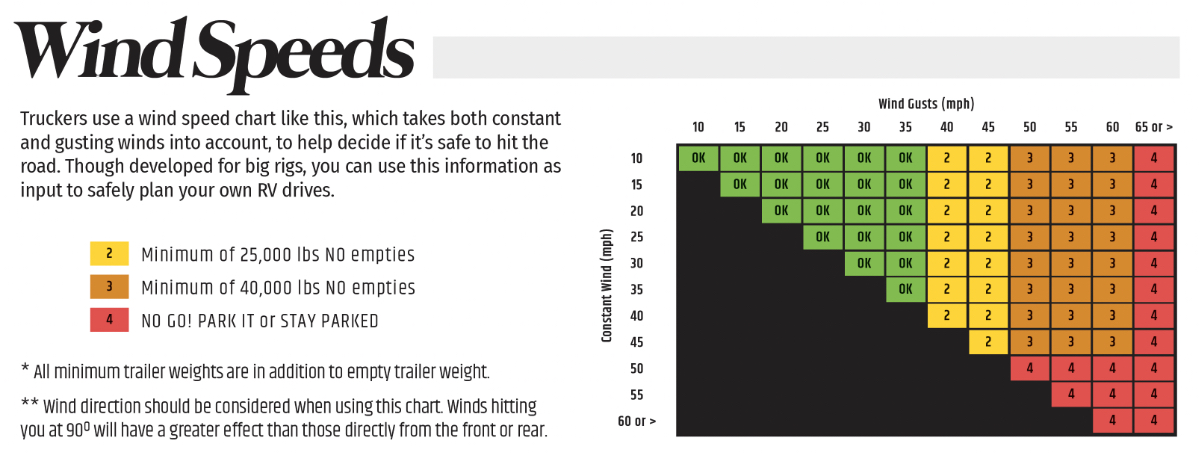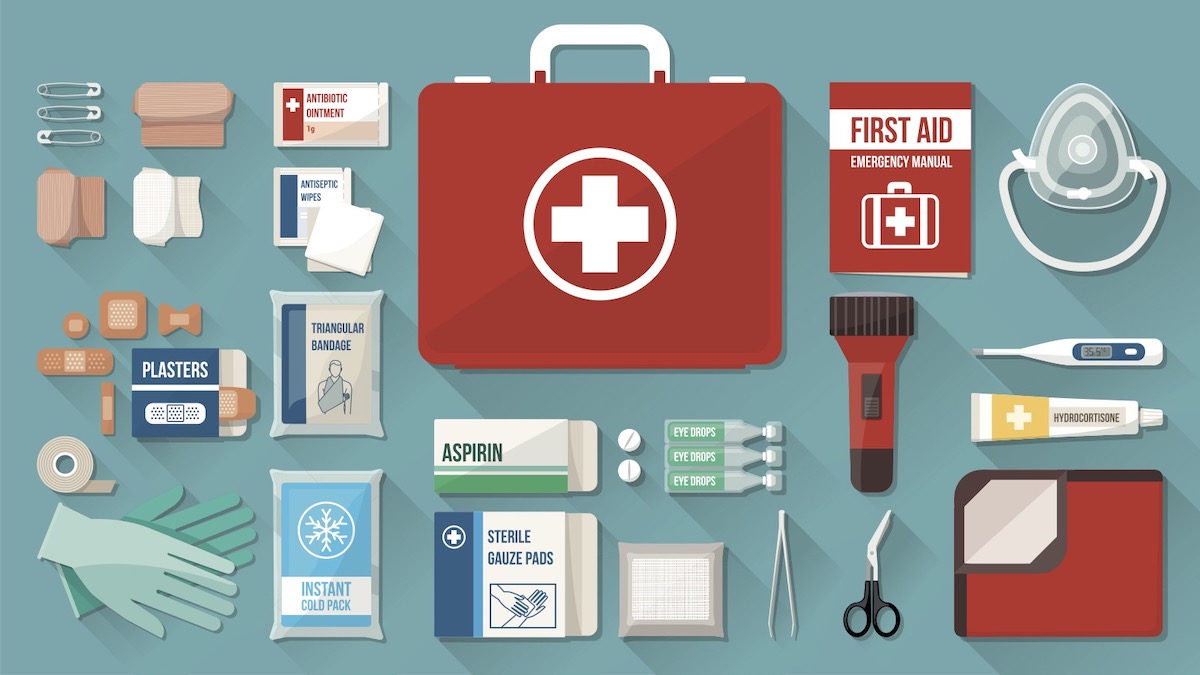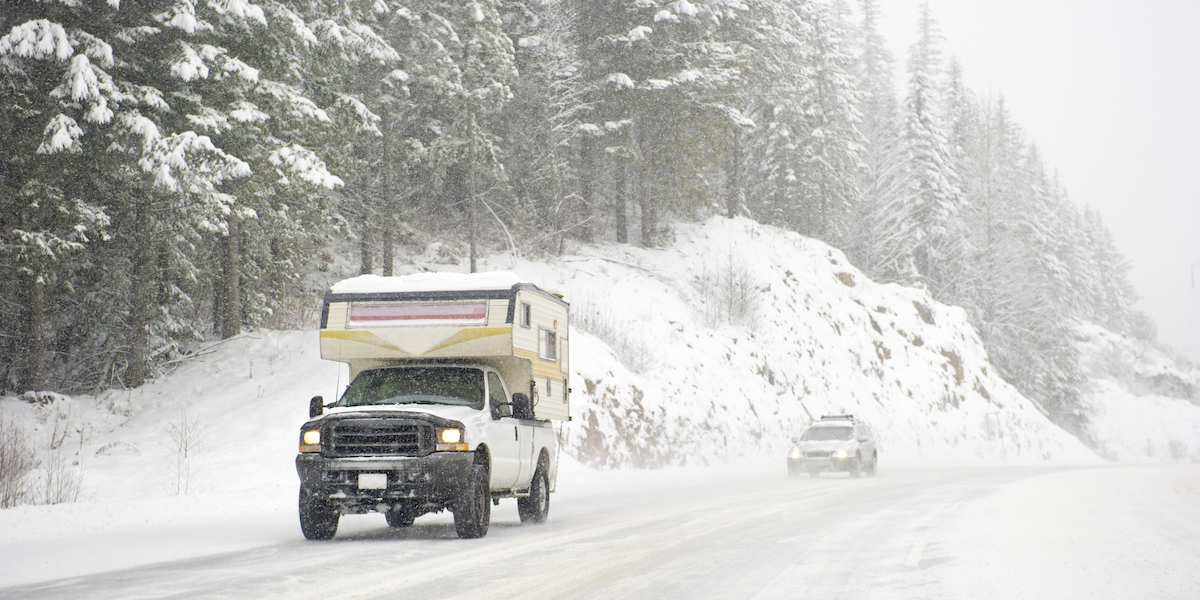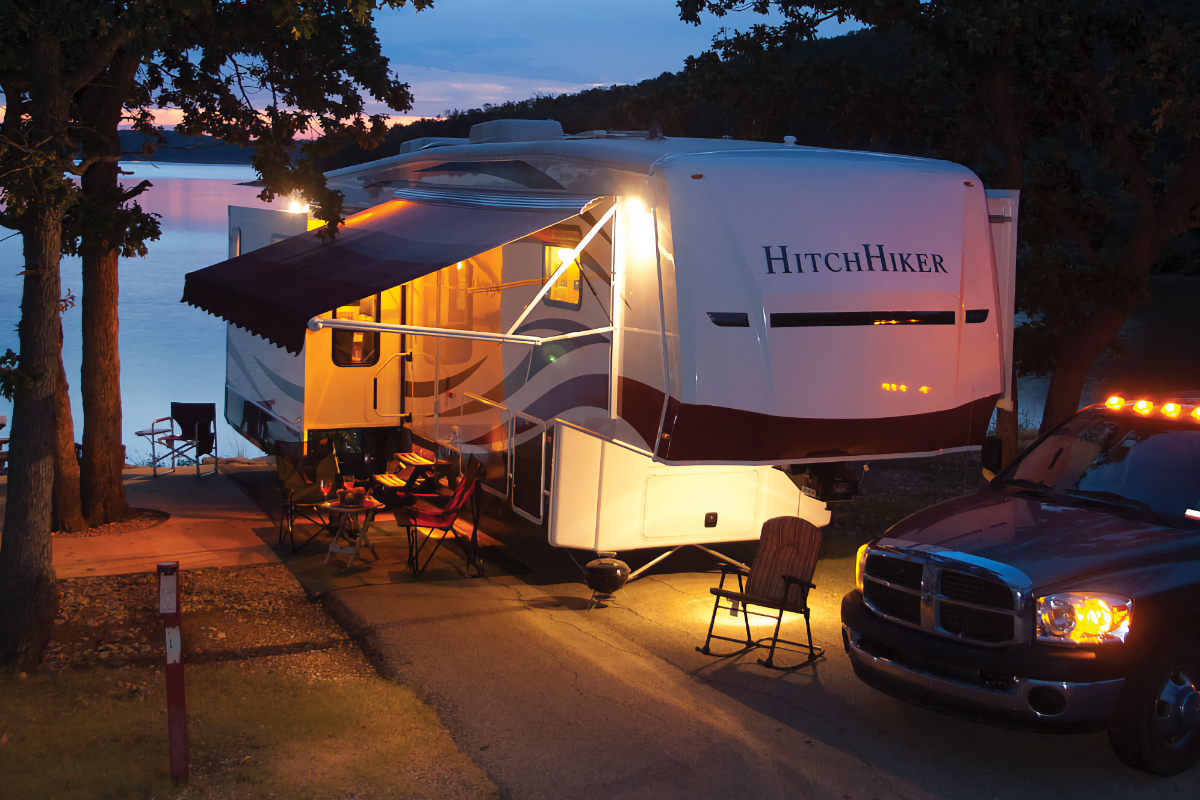Rigs + Gear: In the Driver’s Seat
Tips From the Pros on How to Safely Operate Your RV
Image Caption: Photo Credit: Getty
We own a motorhome and a compact one at that. And while I do occasionally tow a small cargo trailer, we don’t use it frequently enough that I’d consider towing “routine.” We have many RV-owning friends who approach towing with a similar level of hesitation.
But you know who does think towing is routine? Professional truck drivers! That’s what they do, all day, every day. Knowing that my towing skills could use some friendly pointers, I approached Parke Cox Trucking in St. George, Utah, for help. I spoke with Bryant Shulsen, their safety director, and Mike Dominguez, their driver training specialist, to find out what they wished RVers knew about driving larger rigs.
Even if you’ve been driving your rig long enough to get comfortable with it, there’s probably a tip or two here that you’ll want to hang on to, so let’s get rolling.

Photo Credit: Getty
Remember the GOAL
GOAL here is an acronym for Get Out And Look. I’m calling this their number one tip because, besides hearing it from both Mike and Bryant, it was reinforced with signage at the yard and reminder stickers on their rigs’ rearview mirrors. The main point here is that while mirrors and backup cameras are terrific aids for driving and backing, there’s just no substitute for direct observation.
The professional drivers at Parke Cox are trained to get out and look for anything that might prevent them from maneuvering their trailer safely. This could include big rocks, uneven surfaces, nails and screws, a fence, a concrete block, poles, or other objects like a dumpster. It could also include something like another vehicle pulling through behind you, which happens frequently in trucking situations.
Mike (who is also an RVer) said that though the specific hazards are different for RVers, that the GOAL mentality is just as important at the campground. Overhanging power lines, firepits, and low branches are a few things to look for when RVing, as well as making sure there’s enough room to extend your RV’s slideouts. If you travel with a partner, two-way radios can be a handy way to put the GOAL principle into action.
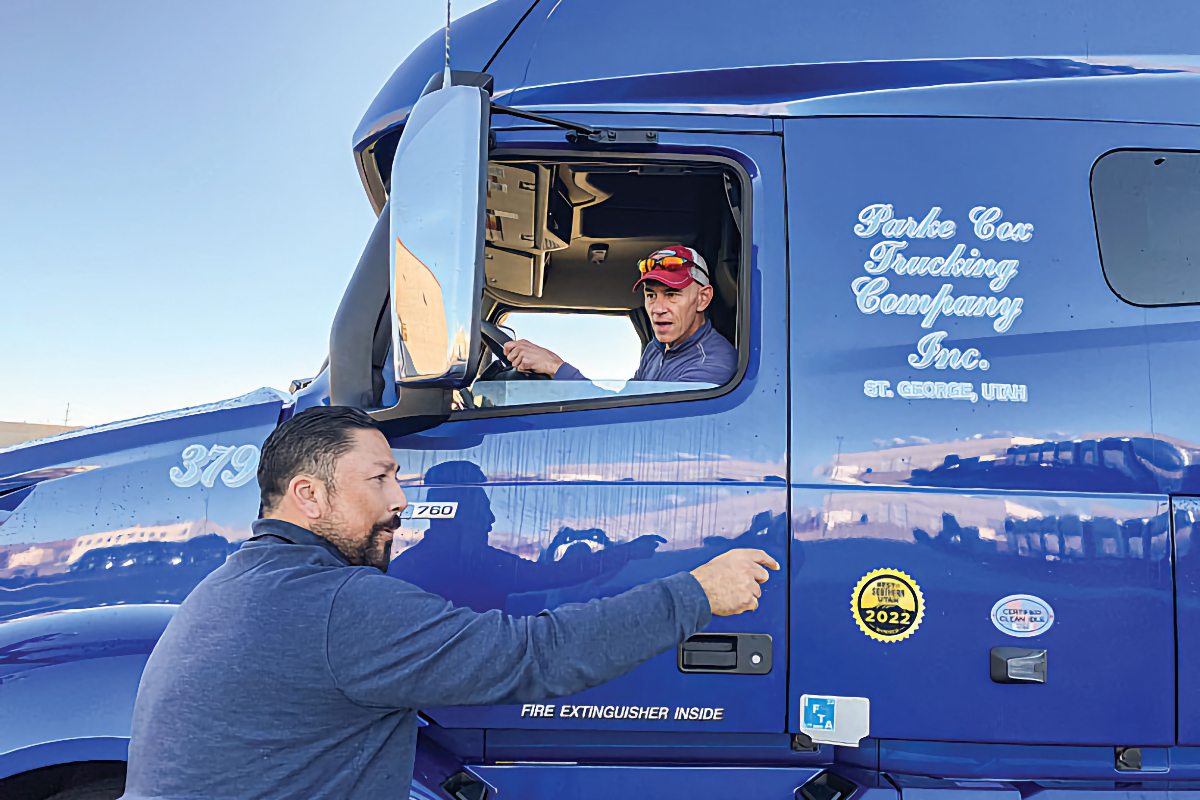
Photo Credit: James Adinaro
Be Aware of Your Environment
Bryant mentioned that maintaining “situational awareness” is important. I dug into that a bit further, and what it really means is always keeping in mind a “way out.” There are times when this is very obvious, and you can stop to make a plan—like when turning into a crowded gas station with a long trailer. But there are other times when it’s all too easy to let this awareness lapse.
For example, if the vehicle in front of you were to brake suddenly, is there enough space for you to stop as well? Could you go right or left to avoid an accident? Are you continuously scanning your mirrors to anticipate problems? Are you using the grade signage to adapt your behavior? Parking lots can change quickly, and Mike encourages extra vigilance and slow speeds in parking lots (and campgrounds).
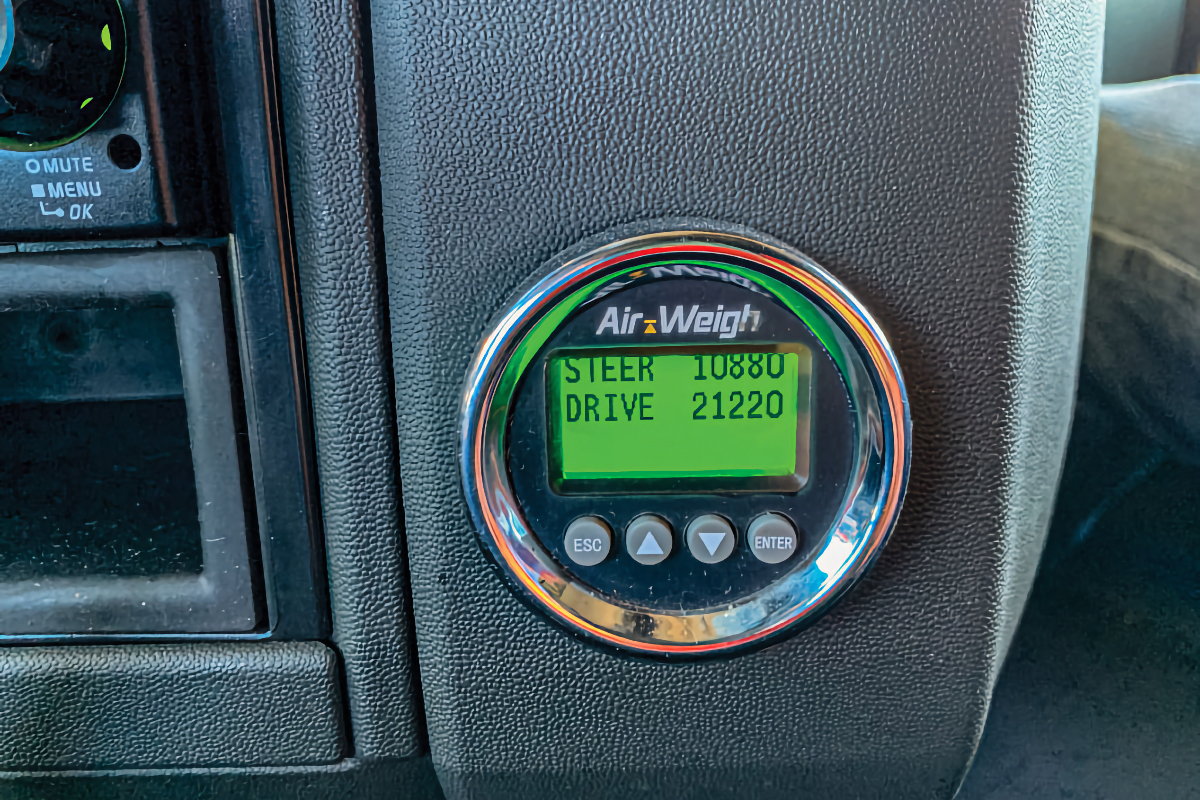
Photo Credit: James Adinaro
Be Aware of Your Rig
Both Bryant and Mike mentioned that knowing the length, width, height, and weight of your rig is key for safe travel. In trucking, these variables are well-known to the drivers, and in many cases, there are laws that dictate what’s allowed. But in RVing, it’s easy to lose track of one of more of these.
I’ve written here before (check the September 2021 issue) about the importance of keeping tabs on your rig’s weight. And most RVers know, for example, to watch out for low bridges. But if you were to roll up to a bridge right now that posted an 11-foot, 3-inch clearance, would your RV fit? Or would you be pulling over and looking for a tape measure? Length and width are important on some roads (Going-to-the-Sun Road in Montana, anyone?), but also important in parking lots and campgrounds, which may lack adequate space to turn larger rigs.
Trip Planning is Critical
As RVers, we’re accustomed to trip planning, but we tend to focus on the fun parts of the trip like “where are we going to stay?” and “what are we going to do?” Paying a little more attention to on-the-road trip planning will pay dividends in safety and peace of mind.
We’ve all heard of RV GPS units that will take your rig’s dimensions into account when planning a route (We know these now, after that previous tip!). Truckers have similar tools that they use. Knowing that those tools might not be up-to-the-minute accurate, Bryant also advised checking state DOT websites for road closures, construction, and live camera views before each leg of a journey.
Weather should also play a part in our trip planning. Driving in bad weather is no fun, and it requires adjustment in your preparation and driving technique. Besides the obvious tips like slowing down and having good wipers, Mike advised reducing the drag on electric trailer brakes when driving in slippery conditions to decrease the likelihood of a skid.
And finally, there’s wind, which can be a real hazard for large vehicles. We all know driving in crosswinds can be challenging, but how much wind is too much? For semi-trucks, there are wind-speed charts available that consider both constant and gusting winds in determining if it’s safe. Granted, most RVs are (usually) smaller and lighter, but the truck wind-speed chart is a good starting point to inform your own driving.
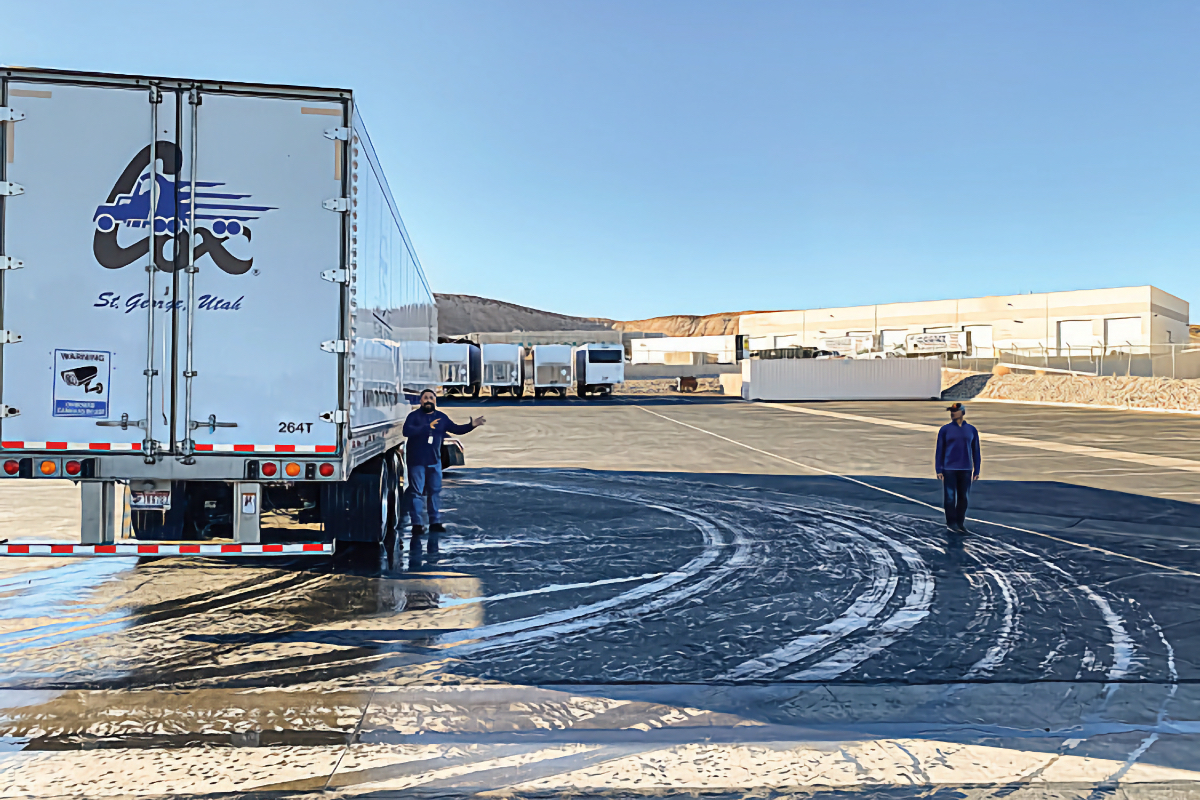
Photo Credit: James Adinaro
Watch Out for “Off-Tracking” and “Tail Swing”
“Off-tracking” refers to the fact that, when turning, the back wheels aren’t going to go exactly where the front wheels do. All vehicles do this to some extent, but it’s far more pronounced with longer, hinged vehicles like semi-trucks. You can’t avoid off-tracking, so learning how to deal with it is key.
Mike teaches this in terms of a fixed reference point, which is an obstacle you want to turn around, and a rolling reference point—typically the rearmost axle of your rig. “You can’t safely initiate a turn until the rolling reference point on your rig is even with the fixed reference point on the ground,” Mike said. When I saw him demonstrate this in the yard, it struck me just how great a distance this could be. On a vehicle with 40 feet between the axles, it’s necessary to drive 40 feet past the turn before you can safely turn in.
On the road, this might mean making three left turns instead of one right one, using the width of the extra lanes to make the turns easier. This also helps explain those “This vehicle makes wide right turns” signs we’ve all seen.
“Tail swing” is another large-rig phenomenon where the back end of the rig moves in the opposite direction of a turn. It’s more pronounced on vehicles with a large overhang behind the rear axle. I see near misses of this type very frequently in gas stations, where you often have to turn sharply immediately on leaving the pumps.
When learning how to deal with your rig’s off-tracking or tail swing, Mike stressed that practice is key. He encouraged RV drivers to take their rigs and some cones to an empty parking lot to get a feel for how their rig handles and from what positions we can initiate maneuvers to account for both off-tracking and tail swing.
Keep Your Shifts Sane
Professional drivers have strict limits on how much driving they can do in a day. They’re allowed 11 hours of drive time in a 14-hour shift once per day. Not only that but they’re required to have at least a 30-minute break sometime before they’ve reached their eighth hour. Any violation of these rules carries strict penalties from the Federal Motor Carrier Safety Administration (FMCSA), state Departments of Transportation, and the trucking companies themselves.
These guidelines were developed based on experience and safety. “Once you get to 10 hours, you’re feeling it, and by the 11th hour, you’re done,” Mike told me. RV drivers aren’t superhuman, and common sense suggests we should look at these limits as maximums and not merely suggestions. Even though RVing can mean some long driving days, it doesn’t mean you have to do all that driving at once. Keep your driving days to as few hours as practical.

Photo Credit: Getty
Approach Night Drives with Caution
Both Bryant and Mike advise extra caution when driving at night but recognized it can’t always be avoided. If you must drive at night, adjust your technique accordingly. “Use your high beams whenever possible and don’t over drive your headlights,” Bryant advised. And Mike told me that clean mirrors and windshields make more difference than you think when driving at night, so take a few minutes to clean them up at each stop. Anti-glare glasses (not tinted ones) can also be helpful when driving at night.
Mike recommends, if possible, avoiding driving altogether between midnight and 6 a.m. Mondays and Thursdays (for reasons I can’t fathom) seem to be the most dangerous days to drive.
Use Common Sense at the Travel Center
When I brought up the subject of RVs and trucks sharing space at truck stops and travel centers, I was on the lookout for signs of frustration or tension between the two camps—but I couldn’t detect any from these guys. We did discuss some obvious errors, like trying to fill your RV from a truck diesel pump (the nozzle won’t fit), but beyond that, a little common courtesy goes a long way.
I did get one good truck-stop parking tip from Mike. “I tell drivers to be the guy out of the way, not in the way,” he said. “You’ll notice at the truck stop, the more experienced drivers with the nicer rigs will park way in the back, away from the action.” (This is the way I’ve always parked when going to the grocery store!)
I also asked them other burning questions, like Do truckers wear trucker hats? And if so, wouldn’t they just call them “hats?” (Some do, on both accounts). Hattery aside; I felt like I learned a lot from my time with Bryant and Mike. There seem to be quite a few similarities between RV driving and trucking—and that’s before you realize that their rigs have TVs, comfortable beds, compressor refrigerators, and inverters, just like our RVs.
So the next time you’re on the road, and you come across a rig from Cox Trucking, give them a wave. They’re good folks!
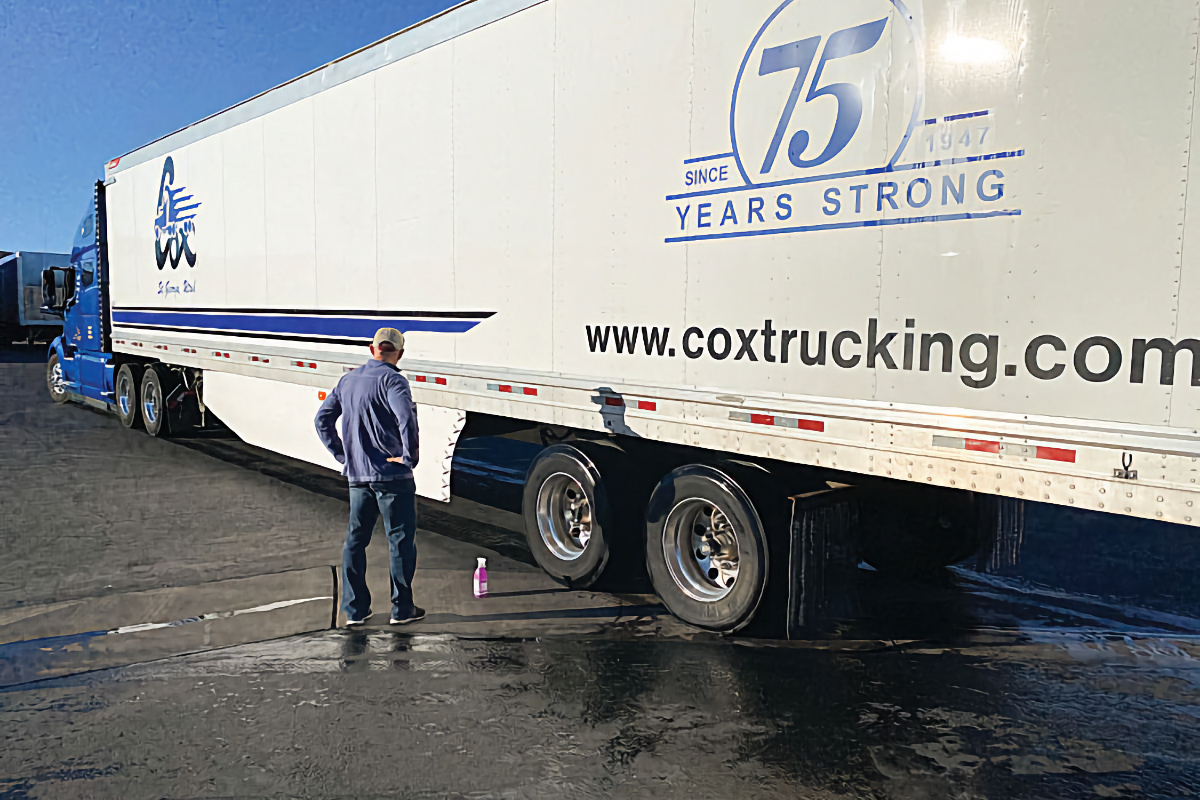
Photo Credit: James Adinaro
Backing Up a Big Rig
I’m strictly a motorhome guy, so I sometimes find that even our small trailer is so challenging to back up that it can be easier to disconnect it and move it by hand, even when it’s loaded. So, when Mike asked if I’d like to try backing up one of their rigs across the yard, I was understandably hesitant. “There are multiple ways to teach backing up,” Mike told me, “So if I’m trying to teach someone, and I can see that it isn’t clicking for them, we’ll try something else.”
This made my ego feel a bit better because I felt I clearly hadn’t been exposed to the right training previously. These are two different techniques Mike gave me, which helped me back what felt like a 200-foot-long rig across the yard, straight as you please.
First, for either of these techniques, when backing straight, your speeds should be slow, and your steering wheel movements shouldn’t need to be much more than a quarter turn in either direction. Also, your mirrors need to be properly adjusted, with about one-quarter of the width of the mirror showing your trailer and the other three-quarters showing the lane to your side.
Method 1: Turn Toward Trouble
With one hand on top of the wheel at 12:00, start backing in a straight line and watching your trailer in the mirrors. If you see your trailer start to get out of line, that’s trouble. Simply move the wheel toward the side that’s in trouble—but again, you shouldn’t have to move your hand much past 3:00 on the right or 9:00 on the left.
Method 2: Where the Wheel Goes, the Trailer Follows
For this method, put your hand on the bottom of the wheel at 6:00, and start your straight-line backing. Without removing your hand from the wheel, turn the wheel in the direction you want the trailer to go—meaning your hand moves toward 3:00 if you want the trailer to go right and toward 9:00 if you want the trailer to go left.

